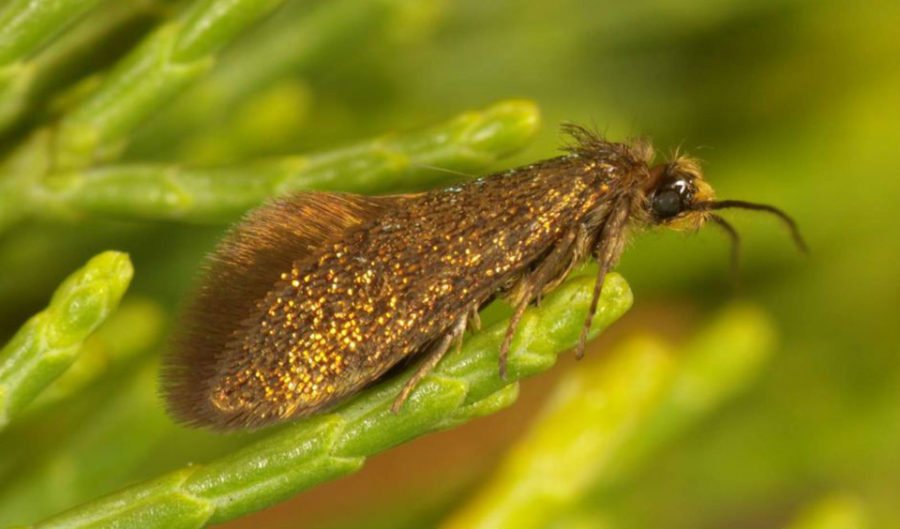The sparkly enigma moth a unique species

Bec Crew
Bec Crew

You know when you buy cheap Christmas decorations of little reindeer, robins, or rabbits, and they’re super-sparkly and just a little bit ill-proportioned because they were mass-produced with several million other reindeer, robins, or rabbits? That’s kinda what this little moth looks like. Slightly off, but so Christmassy.
Meet Aenigmatinea glatzella, commonly known as the enigma moth. Recently discovered (and reported in January 2015) among the native pine trees of Kangaroo Island, which sits 112km south-west of Adelaide, the moth is so entirely unique, scientists are calling it one of the most exciting entomological finds in the past four decades.
Why so special? Well for one, it’s the only member of the Aenigmatineidae family of moths, because there’s not another known species of moth on Earth that exhibits features close to what the enigma moth has. And on top of that, the defining features of the enigma moth – its mouth parts and genitals – are oddly primitive, meaning they don’t show evidence of millions of years of evolution like the vast majority of moth and butterfly species we know about do.
“The most primitive moths have jaws, with one of the first steps in the evolution of advanced moths and butterflies being the development of a tongue. Aenigmatinea has neither – its mouth parts are almost entirely reduced,” say two of the scientists who found and identified the new species, Douglas Hilton from the University of Melbourne, and Ted Edwards Australian National Insect Collection at CSIRO, on The Conversation.
You can also tell you’ve found a primitive moth if the females have a single genital opening.
Primitive moth a mind-blowing find
According to Hilton and Edwards, a new species of primitive moth has not been discovered anywhere in the world since in 1970, and it’s mind-blowing to find one, because they comprise less than 1 per cent of all extant moths and butterflies. These primitive moths can tell us a lot about the evolution of these insects.
“The discovery of a new family of moths tells us about the early steps that led to the evolution of the more typical moths and butterflies, which are more familiar,” Douglas and Ted say.
Publishing the find in the journal Systematic Entomology, the team identifies the females as having sparkly purple wings, and the males sporting golden ones.
These moths are tiny – their entire wingspan is a mere 44mm – as is their lifespan. When they emerge from their cocoon, they will mate and die, all in the space of a single day.
While the species’ name sounds pretty fancy, it’s actually a cute little play on words that refers to its round little partially bald head – which is exactly what ‘glatze’ means in German.

